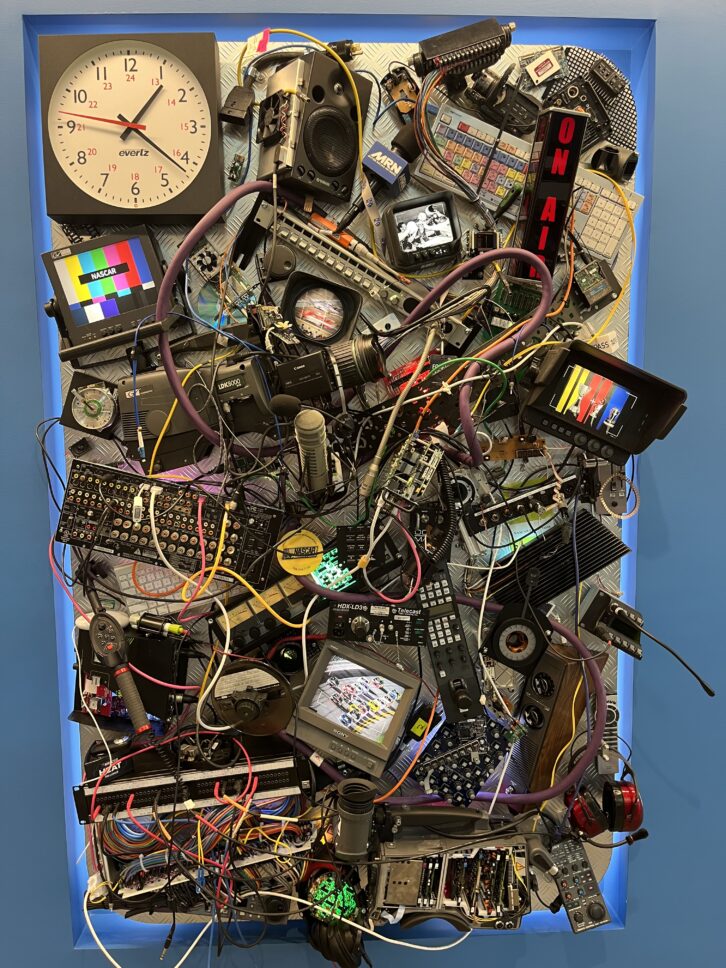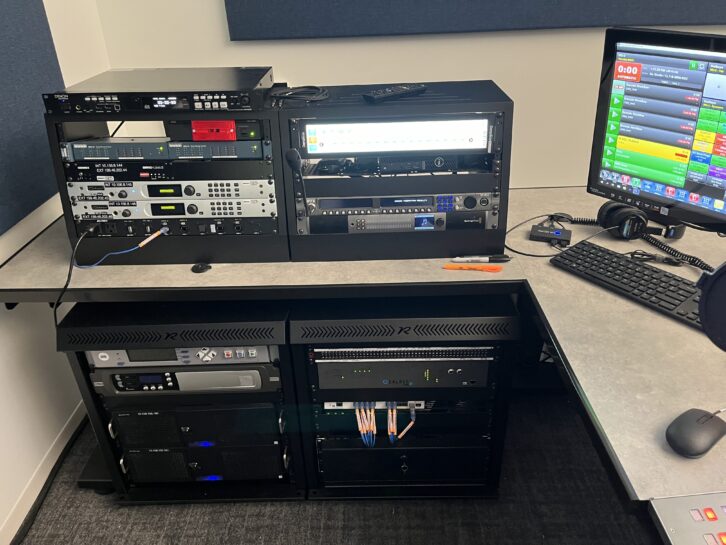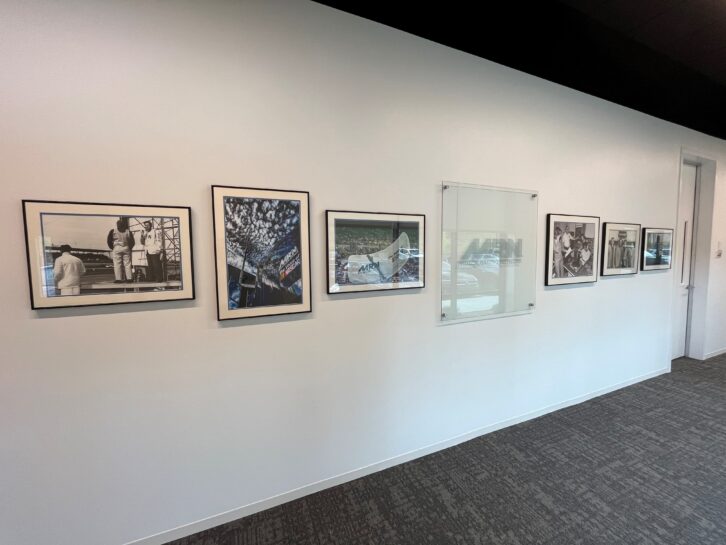Motor Racing Network has been broadcasting live play-by-play of NASCAR races since 1970. Now, the radio network has a brand-new facility to keep listeners strapped in to their favorite auto racing coverage.
As the last MRN studio build from 2007 was aging out (talk about a drag!) it was time for some new digs.
Based in Concord, N.C., just 30 minutes outside of Charlotte, MRN recently moved into a 58,000 sq. ft. production facility complete with three network-quality television studios, two radio studios with adjacent announce booths, 11 audio/video edit suites and a cinema-quality voiceover studio. Dubbed NASCAR Productions, the building cost $53 million to build.
MRN was founded in 1970 by NASCAR founder Bill France Sr. and legendary sportscaster Ken Squier. A wholly-owned subsidiary of NASCAR, its first broadcast was the 1970 Daytona 500.
Since then, the network has been producing live play-by-play of NASCAR Cup Series, NASCAR Xfinity Series and NASCAR Craftsman Truck Series races. Its new studios now feed live race broadcasts and NASCAR-themed weekday programming to nearly 500 radio station partners across the U.S., including in Alaska, Hawaii and worldwide via the American Forces Network.
Bob Quick is the director of radio partnerships and traffic at Motor Racing Network. He, along with colleagues Craig Moore and David Kirk, answered our questions via email.

Radio World: When was this work done? Please share the project timeline.
Quick: From conception to implementation [it took] less than two years. Construction started in fall of 2022 and our first broadcast from the new facility was the NASCAR Cup Series exhibition race called the Busch Clash at the L.A Coliseum on Feb. 3, 2024.
Unexpectedly, the broadcast was moved up by 24 hours due to predicted life-threatening weather forecasted for the scheduled day. With little testing and only hours of preparation to execute the broadcast, we successfully fed over 300 radio stations the live broadcast. For our television production friends, their first broadcast was for the Rolex 24 Hours of Daytona IMSA event on Jan. 25, 2024.

RW: Where was the old facility located?
David Kirk, managing director, engineering, NASCAR Productions: We moved from a building about two miles from where we are now across from Concord-Padgett Regional Airport in Concord, N.C. Our television production friends moved from Uptown Charlotte, or about 15 miles away.
RW: Who led the technical project for the facility? Who were the notable service providers, if any?
Quick: The overall project was a collaboration between Motor Racing Network, NASCAR Engineering and our broadcast technology partner the NEP Group. With the move to the new facility, we also transitioned to different satellite and digital program distribution partners — the Audio 1 XDS platform for satellite distribution and Trucast Solutions for digital file delivery. There have been many technical changes for MRN in 2024.
RW: What were the major hardware or software systems chosen?
Craig Moore, senior producer, Motor Racing Network: We installed new Calrec Type R AoIP consoles with Dante digital audio routing both at the studio and on location for live events. We use WideOrbit digital audio delivery automation systems to feed our programming to affiliates.

For live events, the NASCAR Transmissions team provides the MRN studio with 18 channels of digital audio that is then mixed and sent to our satellite distribution partner. The studio producer is able to communicate with the on-location personnel using eight channels of digital audio that returns to the track. MRN broadcast audio also feeds the track public address system to race fans using Racing Electronics scanners while watching the event in the stands with little or no latency.
Another change associated with the move is that the production team transitioned to MAC-based audio/video production after decades on the PC platform, but [is] still using their familiar Adobe Cloud Suite of production products like Adobe Audition, Premiere Pro, Photoshop and After Effects.

RW: Describe the design aesthetic approach.
Quick: Artwork is still being installed in the building. A showpiece being the “Techno-Clock” that a local artist assembled with old technology pieces from the past representing the different business units in our division.

RW: In your opinion why is this project special — what would a fellow engineer or radio manager find most interesting about it?
Quick: It was our first entry into the uncompressed audio world of the 2110-30 standard all while being able to access hosts from across the country for our weekday programming and digital-only programs. Plus, our studios are available for guest hosts on the SiriusXM NASCAR Channel when necessary.

RW: Most projects of this type have one or two smaller but interesting quirks or details that only a fellow engineer or radio geek can appreciate. Do you have one to share?
Kirk: The design process helped us eliminate any quirks in the new facility; however, here’s a quirk found outside the building. We moved from a building that was across the street from an industrial gravel pit (boom!) to one with a vineyard and walking trail next to it. The building also houses NASCAR Race Control. The room is being beta tested now, and is similar to the “war rooms” that all the major sports have to help with penalty calls in the moment. How many broadcast facilities can say that?

All data from every NASCAR track is fed through this building before it goes anywhere else. Not just audio and video, but also data collected by every car on the track and the technology tracking them embedded within them, including the same “photo finish” system that is used for major events like the Kentucky Derby and the Olympics.
RW: What else should we know about the project?
Quick: Being in the same state-of-the-art facility that originates national and international television programming for NASCAR has increased the on-air quality of Motor Racing Network productions for our radio station affiliates dramatically. But it wasn’t without some bumps and bruises to work out the kinks with all the changes associated with the move.

